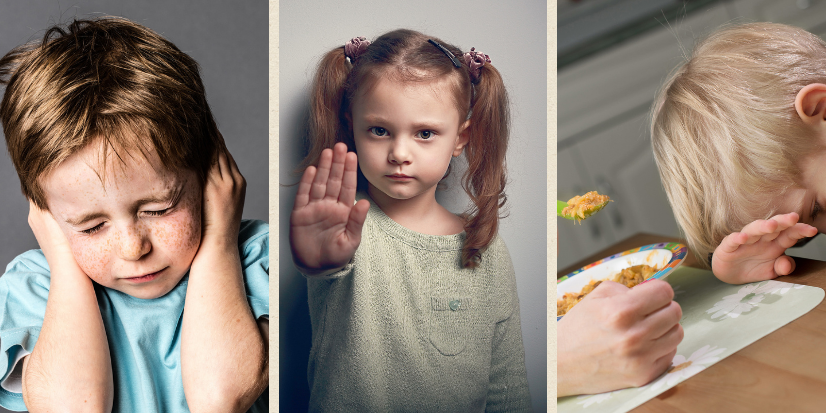Understanding the relationship between sensory processing disorder and autism is vital for early intervention, effective support, and long-term well-being. These conditions frequently coexist, yet they remain distinct diagnoses with different traits and treatment approaches.
At Nurturers, we are dedicated to supporting families and caregivers by explaining complex neurodevelopmental topics in clear, compassionate ways. Let’s explore the connection between sensory processing disorder and autism—what they are, how they differ, and where they overlap.
What Is Sensory Processing Disorder?
To begin, we must answer the essential question: What is sensory processing disorder?
Sensory processing disorder (SPD) is a neurological condition in which the brain struggles to correctly interpret and respond to sensory input. This may involve one or more of the eight sensory systems:
- Visual (sight)
- Auditory (hearing)
- Tactile (touch)
- Olfactory (smell)
- Gustatory (taste)
- Vestibular (balance and movement)
- Proprioception (body position awareness)
- Interoception (internal body cues like hunger or temperature)
Children and adults with SPD may be:
- Hypersensitive (over-responsive): Easily overwhelmed by loud sounds, tags in clothing, or bright lights.
- Hyposensitive (under-responsive): Seek out intense sensory experiences, such as crashing into objects or needing strong flavors.
Left unrecognized, SPD can significantly affect daily life—making simple tasks such as brushing teeth, sitting in a classroom, or engaging in conversation difficult or distressing.

Sensory Processing Disorder Symptoms
Sensory processing disorder symptoms can vary widely, but common indicators include:
Physical Symptoms:
- Clumsiness or poor coordination
- Difficulty with motor skills (writing, buttoning clothes)
- Avoiding physical touch or textures (like sand, grass, or certain fabrics)
Behavioral Symptoms:
- Extreme reactions to sensory input (meltdowns, crying, or aggression)
- Easily distracted or unable to focus in noisy environments
- Seeking excessive movement (rocking, spinning, jumping)
Emotional and Social Symptoms:
- Anxiety in unfamiliar settings
- Trouble making or maintaining friendships
- Withdrawal from stimulating environments or activities
The severity and presentation of symptoms may shift as a child grows, but many individuals benefit from lifelong strategies for sensory regulation.

Connections Between Sensory Processing Disorder and Autism
The link between sensory processing disorder autism is both scientifically supported and clinically observed. According to research, over 90% of children with autism exhibit sensory processing difficulties.
Why this connection matters:
- Sensory differences are now included in the DSM-5 diagnostic criteria for autism spectrum disorder (ASD).
- SPD may be one of the earliest signs of autism in toddlers and young children.
- Shared neurological pathways—particularly in how the brain filters and responds to stimuli—may underlie both conditions.
Examples of Overlap:
- A child with autism may cover their ears at loud sounds (sound sensitivity).
- A child with SPD may crave deep pressure (like tight hugs) without necessarily showing the social-communication challenges of autism.
Understanding these connections helps avoid misdiagnosis and supports targeted therapies that address both sensory and behavioral challenges.
Differences Between Autism and Sensory Processing Disorder
Despite their overlap, autism and sensory processing disorder are not the same condition. Here’s how they differ:
1. Core Characteristics
- Autism involves challenges in social communication, interaction, and restricted or repetitive behaviors.
- SPD is strictly related to how the brain processes sensory information and doesn’t typically include communication delays or social deficits.
2. Diagnostic Status
- Autism is a recognized neurodevelopmental disorder in the DSM-5.
- Sensory processing disorder is not currently listed as a standalone diagnosis in the DSM-5, although it’s widely acknowledged by occupational therapists and pediatric specialists.
3. Treatment Approaches
- Autism may involve behavioral therapies, speech therapy, educational interventions, and often sensory integration therapy.
- SPD is primarily treated with occupational therapy focused on sensory integration.
Recognizing the distinctions ensures individuals receive the right diagnosis and appropriate interventions.
The Overlap Between Sensory Processing Disorder and Autism
Many parents find the overlap between sensory processing disorder autism symptoms confusing. It’s common for families to first notice sensory issues, such as avoiding noise or being picky with food, and later receive an autism diagnosis.
Important Points:
- SPD may be a standalone issue, but in many cases, it is part of a broader autistic profile.
- Sensory differences affect emotional regulation, learning, and social interaction, particularly in children with ASD.
- Treating SPD in autistic individuals often improves attention span, anxiety levels, communication, and overall quality of life.
Early assessment by a multidisciplinary team (e.g., pediatricians, occupational therapists, psychologists) is critical to determine whether sensory issues are isolated or part of an autism spectrum profile.
Supporting Individuals with Sensory Processing Disorder and Autism
Whether a child has SPD, autism, or both, individualized support can transform their daily experience. At Nurturers, we recommend the following:
1. Occupational Therapy
A trained occupational therapist (OT) can design a sensory integration plan to help individuals adapt to sensory challenges. This might involve brushing therapy, swing therapy, or structured sensory play.
2. Sensory Diets
A sensory diet is a tailored schedule of activities that help regulate sensory input throughout the day. It can include jumping, squeezing a stress ball, quiet time, or listening to calming music.
3. Home and School Modifications
Create sensory-friendly environments:
- Use noise-canceling headphones
- Install soft lighting
- Provide fidget tools or weighted blankets
4. Emotional Support and Understanding
Recognize that sensory overload is not a behavior issue but a neurological response. Be patient and compassionate, especially during overwhelming moments.
Conclusion
Understanding the link between sensory processing disorder and autism helps us provide better care and support. While they are different conditions, their overlap is significant, especially in young children. By recognizing sensory processing disorder symptoms early and learning how they connect to autism, we can take meaningful steps toward early intervention and a more inclusive world.
At Nurturers, we’re here to guide you every step of the way—with resources, expert insights, and a community that truly understands your journey.

